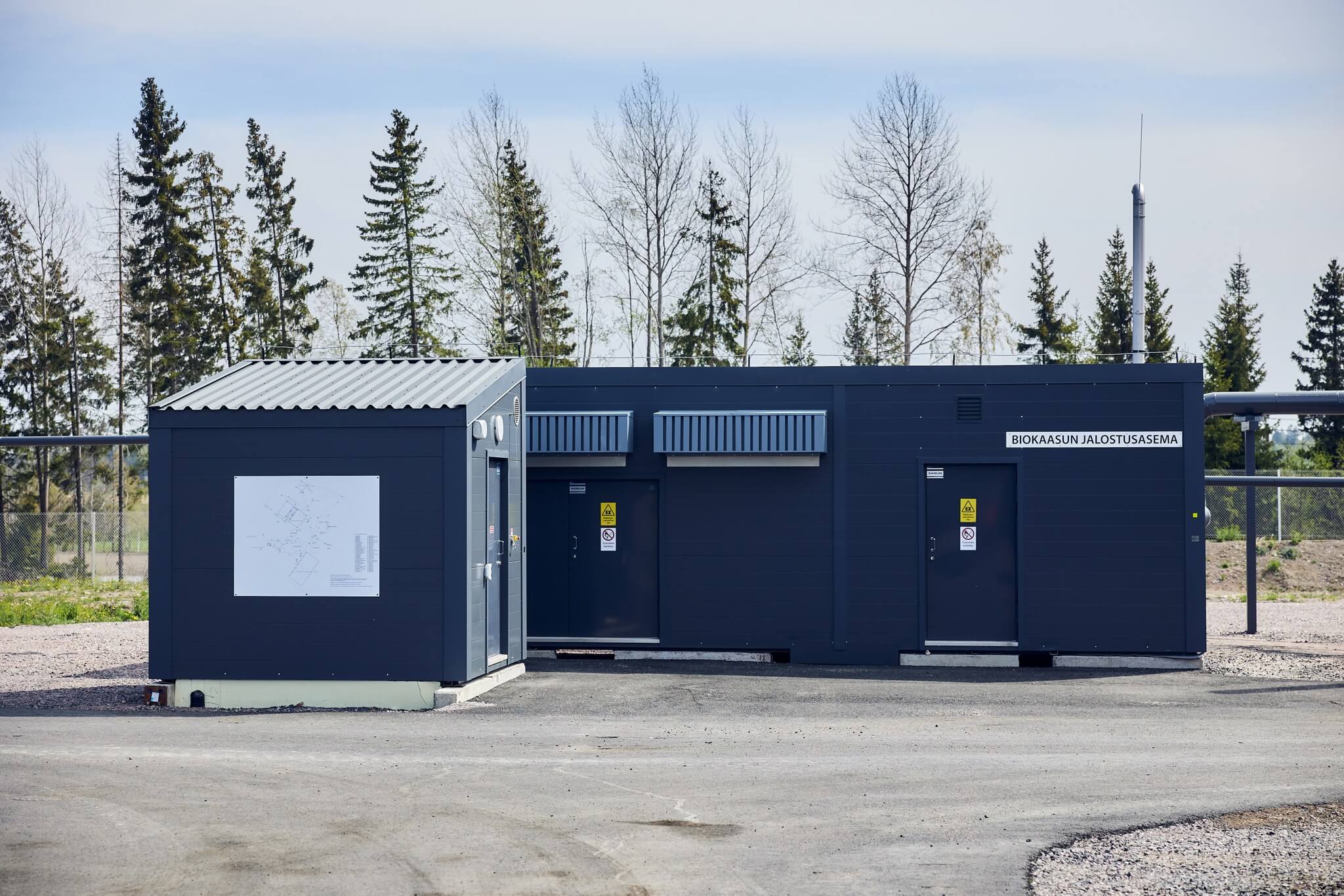Gas turbines and the Brayton cycle
The Brayton cycle is one of the essential processes in thermal and circular power. It describes the thermodynamic operation of gas turbines, for example. The Brayton cycle is named after its inventor, engineer George Brayton, who developed it in the 1870s.
The Brayton cycle is normally open with a compressor compressing air to a high pressure and temperature. The air is heated further in a combustion chamber, and the combustion products and gases expand to the desired pressure in a turbine. The working fluid is typically air or a specific gas.
In a closed Brayton cycle, the working fluid is circulated through a heat recovery unit, and the turbine exhaust gas is fed back to the compressor. The greatest advantages of the closed cycle are higher power and better efficiency.
Our CHP microturbine plants are a powerful solution for the distribution, self-sufficiency and cost optimisation of energy production. Our plants can use a variety of gases from renewable liquefied biogas (LBG) to liquefied natural gas (LNG). Gases hold immense potential as transitionary fuels as gas technology innovations help to directly reduce the emissions of industrial energy production.
Internal combustion engines and the Otto cycle
The Otto cycle is one of the most widely used thermodynamic processes, and engines based on the Otto cycle are the number one power unit for petrol and gas vehicles. The Otto cycle is based on combustion where an electric spark is used to ignite an air-fuel mixture.
The burning gas expands and pushes down on a piston. Like the other famous processes for generating motive power, the Otto cycle is named after its inventor, engineer Nicolaus Otto, who developed it in the 1870s.
Conventional Otto engines have solidified their position, and decades of development have improved their power and efficiency and lowered emissions. Efficiency remains the greatest challenge for Otto engines, and improving efficiency has been key to making them more powerful and less environmentally harmful.
To meet future emission reduction targets and respond to rising fuel costs, new innovations and applications must be developed in addition to Otto engines.
The direct emissions of Otto engines, such as particulate emissions, can be reduced with better catalytic converters and cleaner fuels, for example.
The emissions of biogas and natural gas engines are considerably lower compared to (other) fossil fuels.
We offer solutions based on engine power stations fuelled by environmentally friendly gases for electricity and heat production, among other applications. We design the complete station according to the desired energy source and application, allowing you to achieve the best possible efficiency.
Steam turbines and the Rankine cycle
Much like the Brayton cycle is fundamental for gas turbines, the Rankine cycle describes an ideal steam power process, now widely used in power stations all around the world. In the Rankine cycle, heat is converted into mechanical energy in a closed cycle with water as the most common type of working fluid.
The working fluid undergoes a phase transition from liquid to vapour, and the process benefits from the cost-efficiency and thermodynamic properties of water. The Rankine cycle was developed in the 1850s by professor William John Macquorn Rankine.

/3K7A4677_Photo_PasiSalminen_com.jpg)


/K%C3%A4sitellyt%2006%202024/Paineilma2024-turbo-ohjaus-huolto-s%C3%A4%C3%A4t%C3%B6-Balance-10.jpg)
